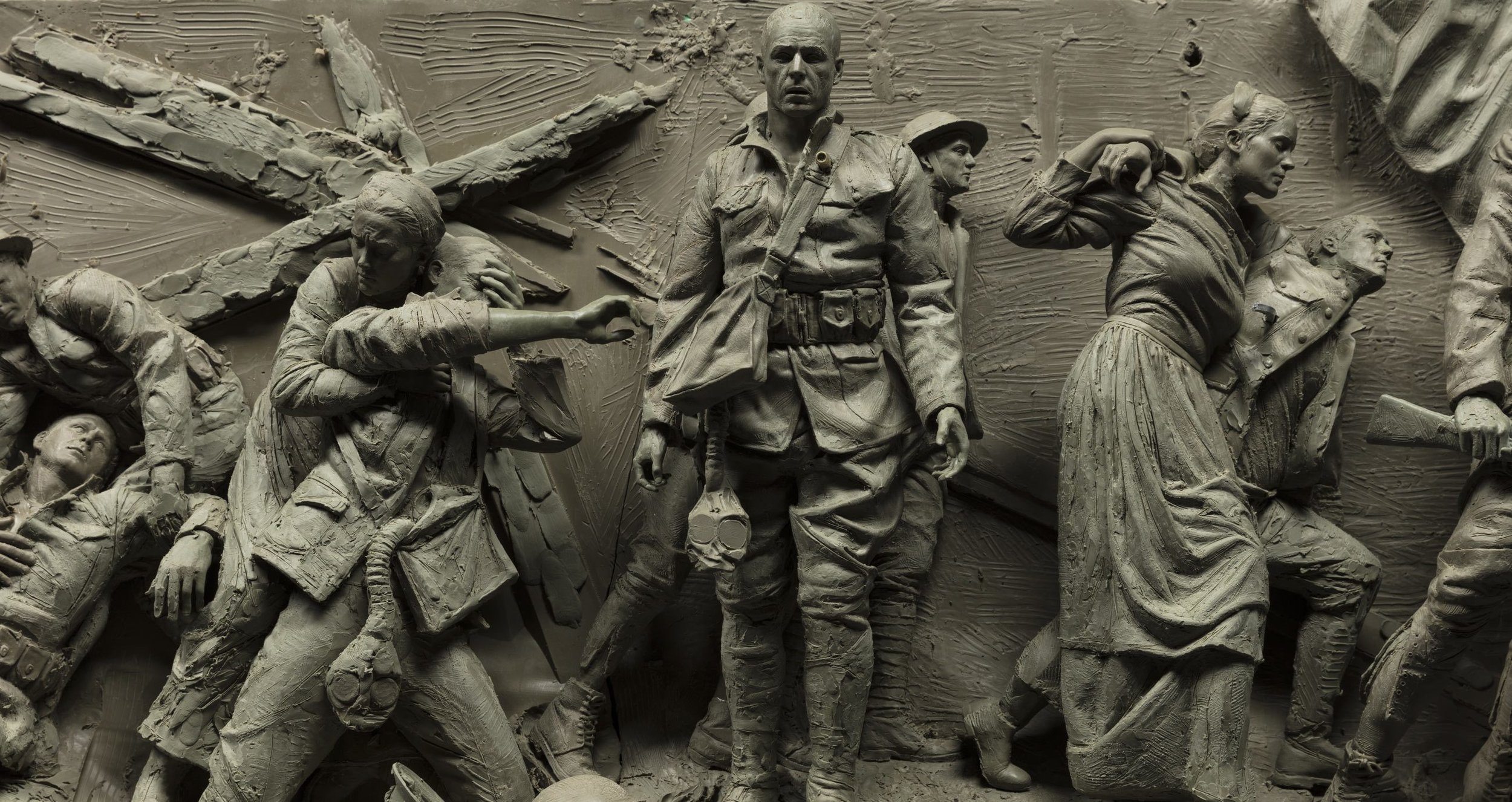On August 18, 2018, architecture critic Catesby Leigh delivered a lecture on "Wethersfield, Manhattan, and the Humanist Prospect." Leigh is a Research Fellow of the National Civic Art Society, which sponsored the event at the Wethersfield Estate in Amernia, New York.
Chauncey Devereux Stillman built the original part of Wethersfield House in 1940, at the close of a long period in which classicism was the primary idiom of American architectural design. The rambling brick residence, colonial in style with a Greek Revival entry portico, would eventually be enveloped by an Italian Renaissance garden of great distinction.
House and garden together comprise a superb example of humanist place-making. If we turn to the opposite, urban end of the spectrum of human habitats—to the Manhattan that was Stillman’s primary place of residence for most of his life—we encounter many magnificent vistas that are fruits of that same humanist tradition spanning thousands of years. But we also encounter a great many contemporary Manhattan vistas—buildings and even landscapes—that amount to a forthright, even brutal negation of that tradition. This is what results when cultural movers and shakers come to see beauty and authenticity as antithetical.
The question is: Can the humanist tradition flourish anew under these circumstances?
You can watch the video of the lecture HERE.
President Trump Appoints National Civic Art Society President Justin Shubow to the U.S. Commission of Fine Arts
National Civic Art Society President Justin Shubow is sworn into the U.S. Commission of Fine Arts. November 15, 2018.
On October 23, 2018, President Donald J. Trump appointed National Civic Art Society President Justin Shubow to the U.S. Commission of Fine Arts for a four-year term. Shubow was sworn into the Commission at its November 15, 2018 meeting.
The Commission of Fine Arts is an independent federal agency consisting of seven presidential appointees who are the aesthetic guardians of Washington, D.C. The Fine Arts Commission has approval authority over the design and height of all buildings (public and private), monuments, and memorials that front or abut the grounds of the U.S. Capitol and White House, Pennsylvania Avenue, the National Mall and its constituent parks, and other similar sites. The Commission also has review authority over the design and aesthetics of all construction within the city.
The Fine Arts Commission was established in 1910 to supervise the design and construction of new buildings in accordance with the 1901-1902 McMillan Plan, which, calling for classical design, created the National Mall and the surrounding monumental core as we know them. The Commission's first chairman was architect and urban planner Daniel Burnham.
Shubow will continue as President of the National Civic Art Society while undertaking his role at the Fine Arts Commission, which meets monthly.
Chartwell Booksellers Hosts a Conversation on Rebuild Penn Station
Video of a conversation on Rebuild Penn Station hosted by Chartwell Booksellers. Please note that the audio improves at the 15:00 mark.
On October 4, 2018 in New York City, Chartwell Booksellers hosted a conversation on Rebuild Penn Station, the National Civic Art Society's project to rebuild the original station. The event featured leaders of Rebuild Penn Station together with design collaborators ReThinkNYC and Atelier & Co.
Until November 1, a scale model of the original station will be on display in the windows of the bookshop, which is located in the Park Avenue Plaza building at 55 East 52nd St. (between Park & Madison Avenues). Also on display is an exhibition of never-before-seen photographs of the original Penn Station taken by the late-Bob Parent, who is most famous for his portraits of jazz musicians.
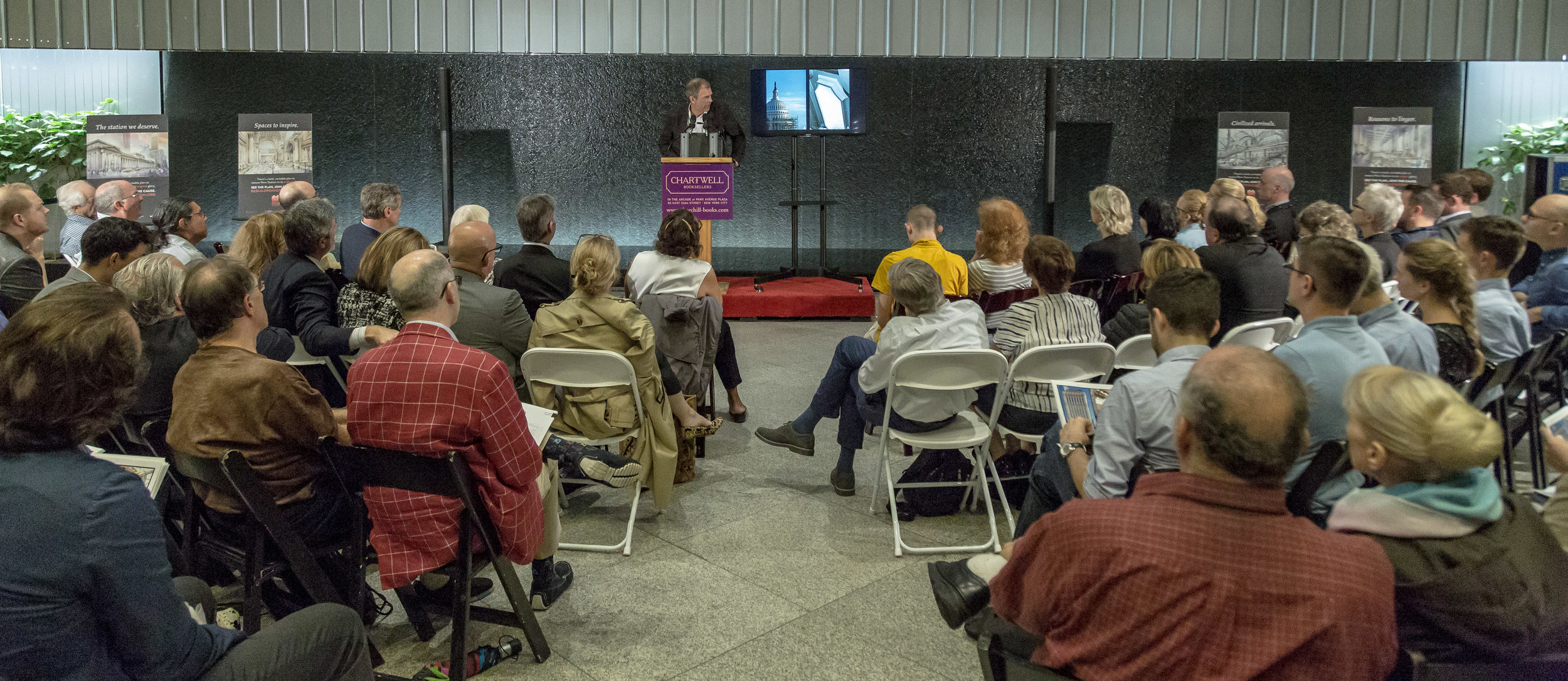
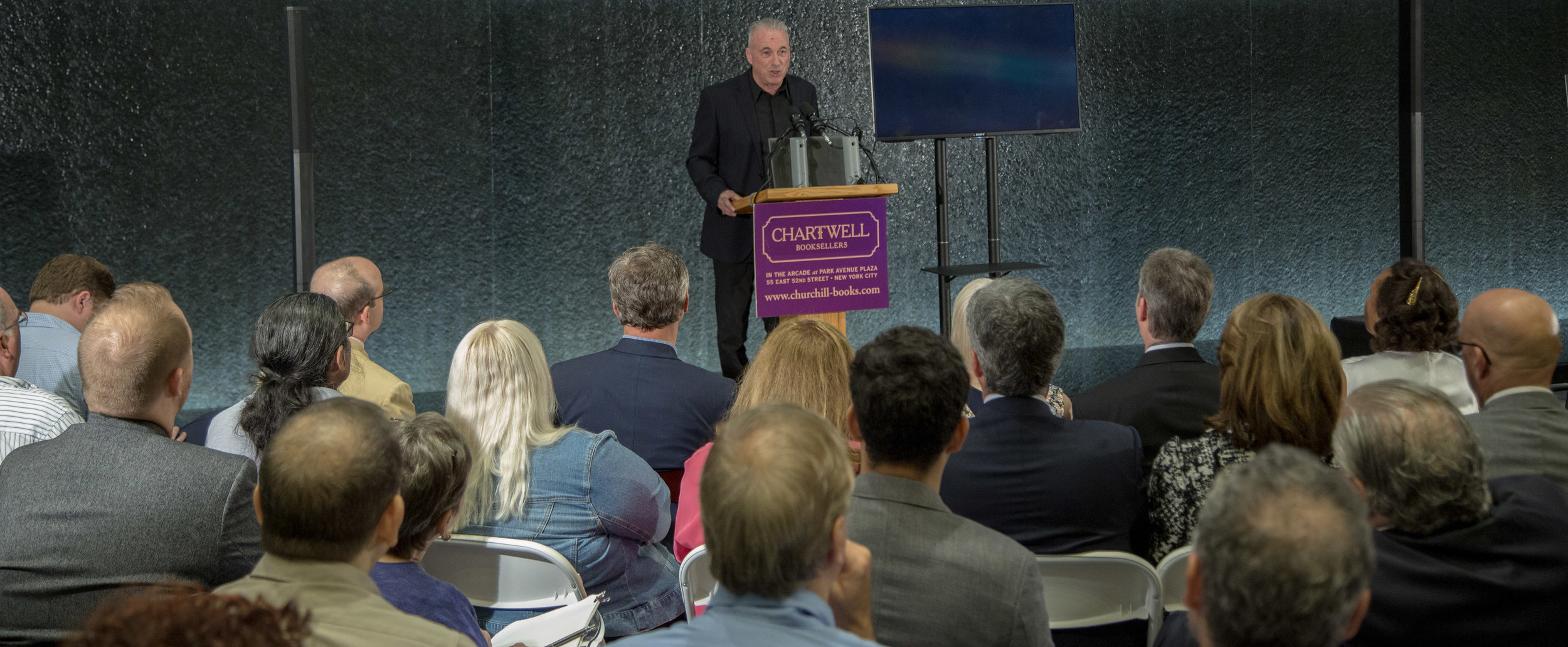
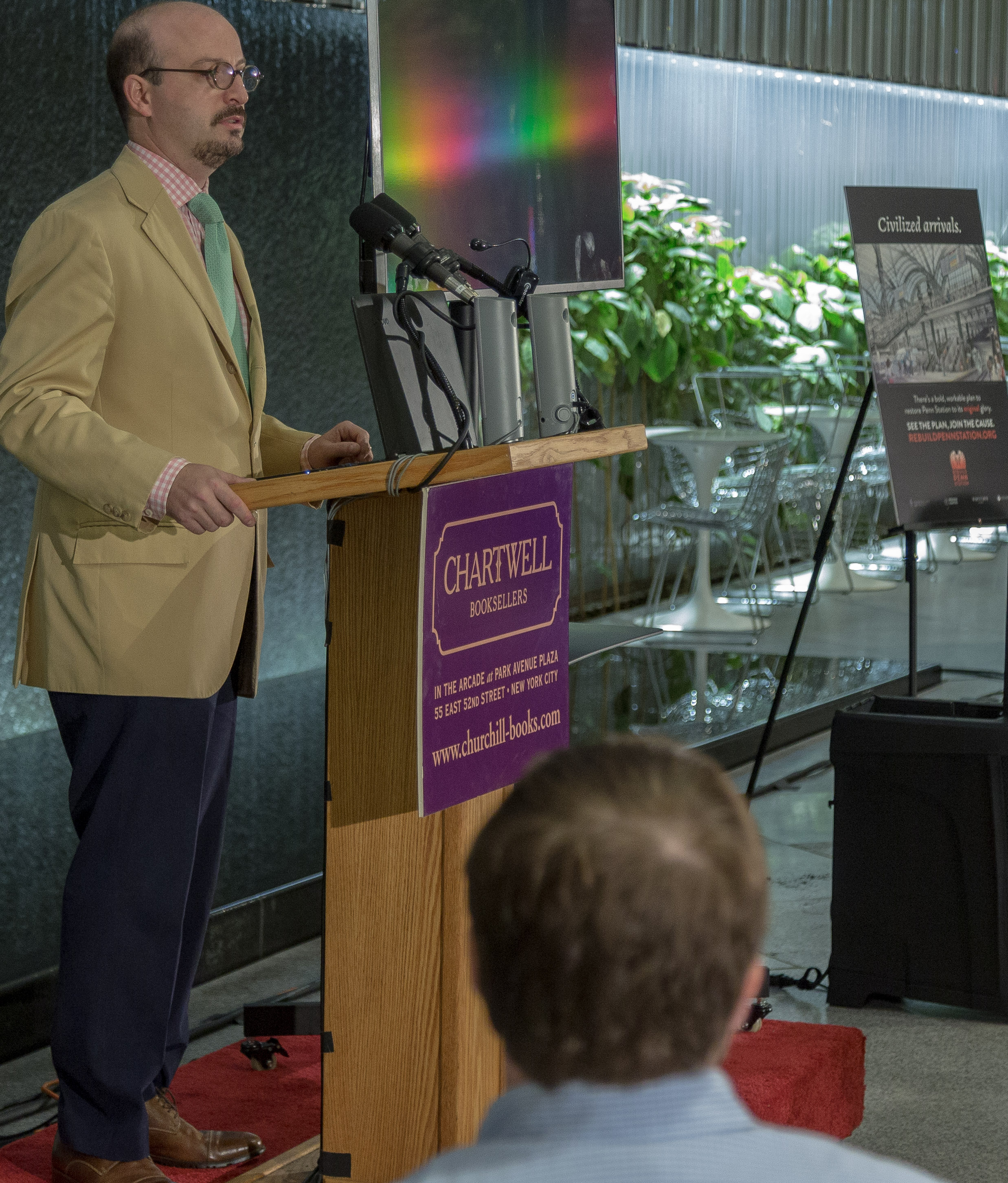
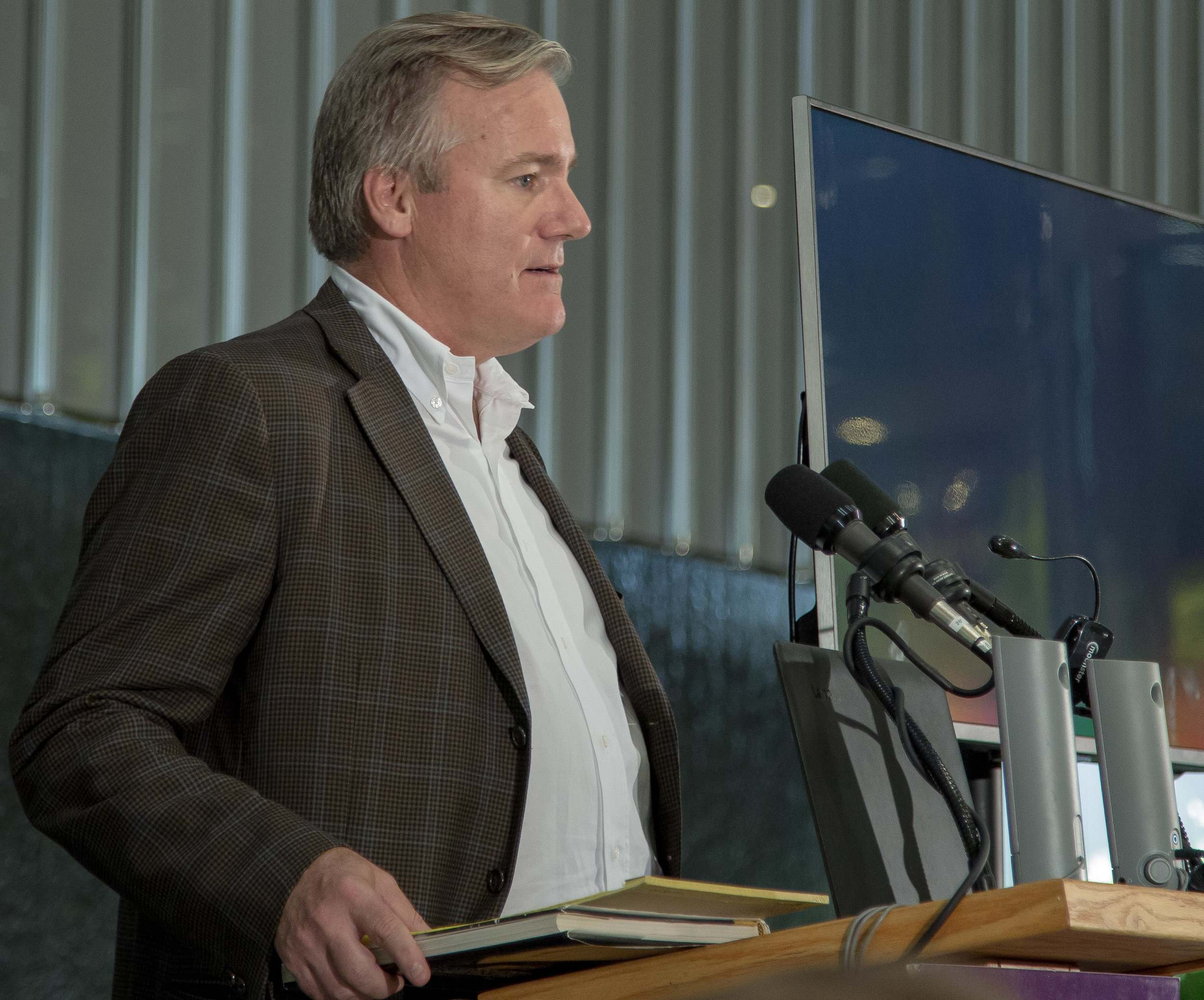
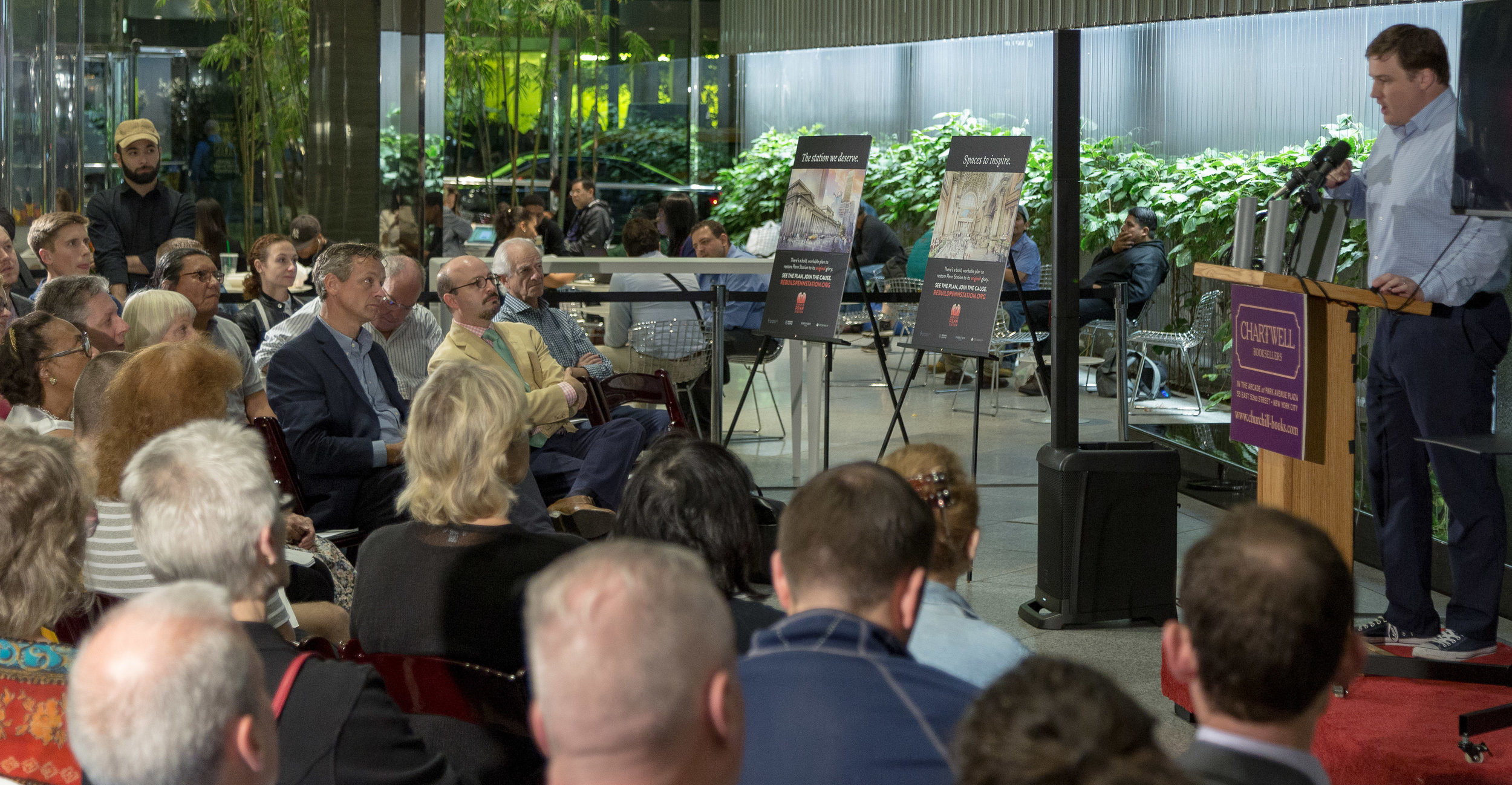



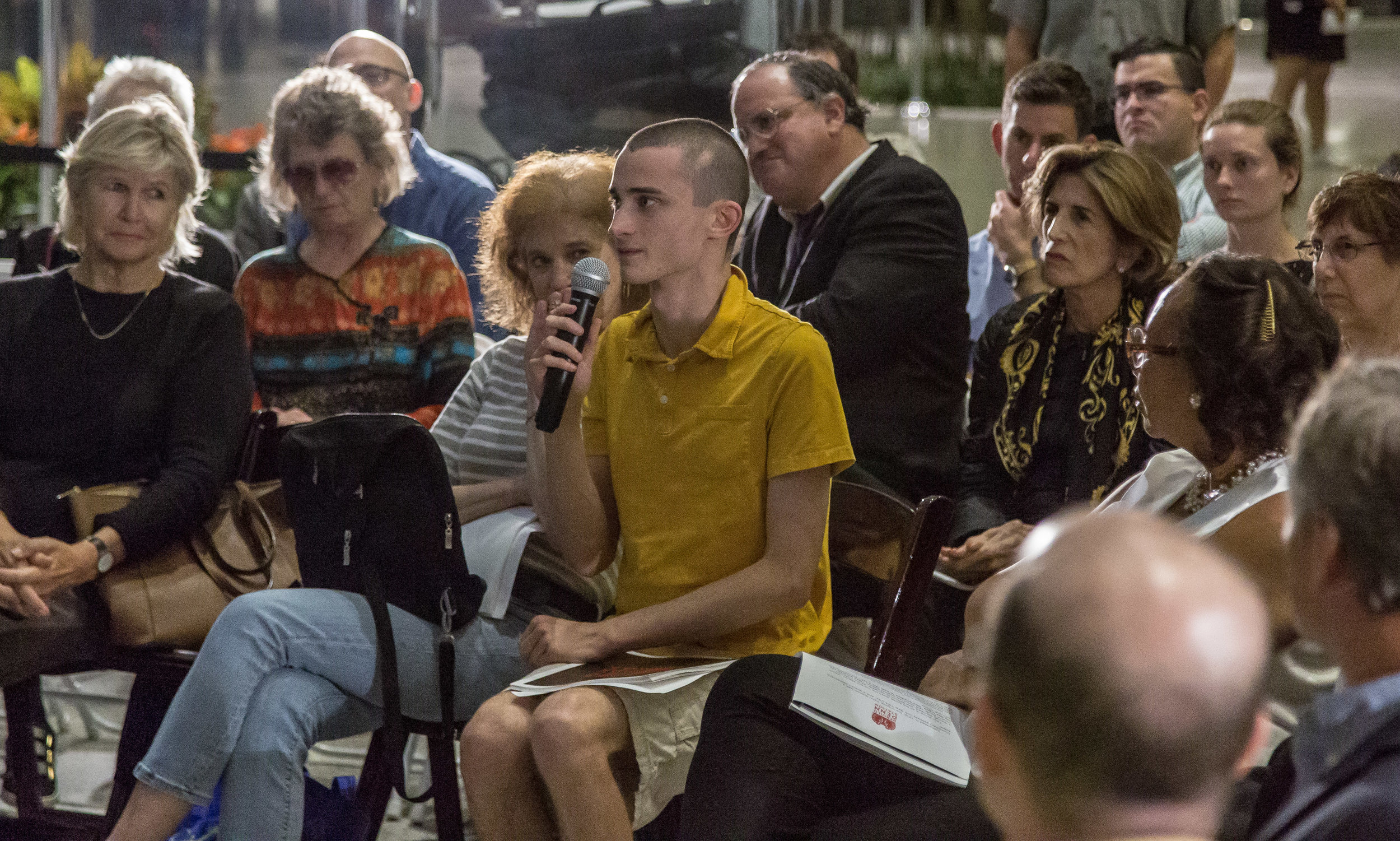
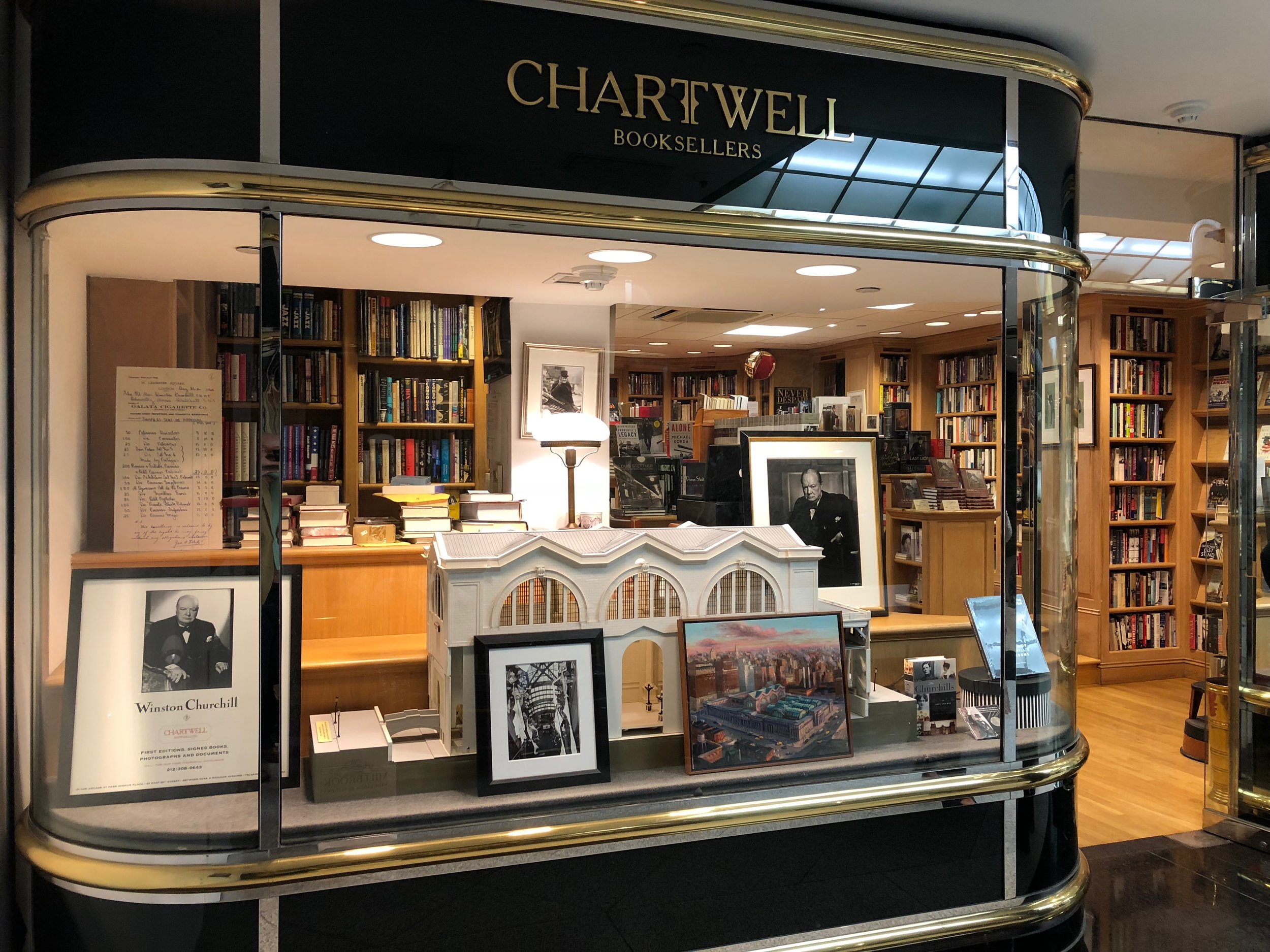
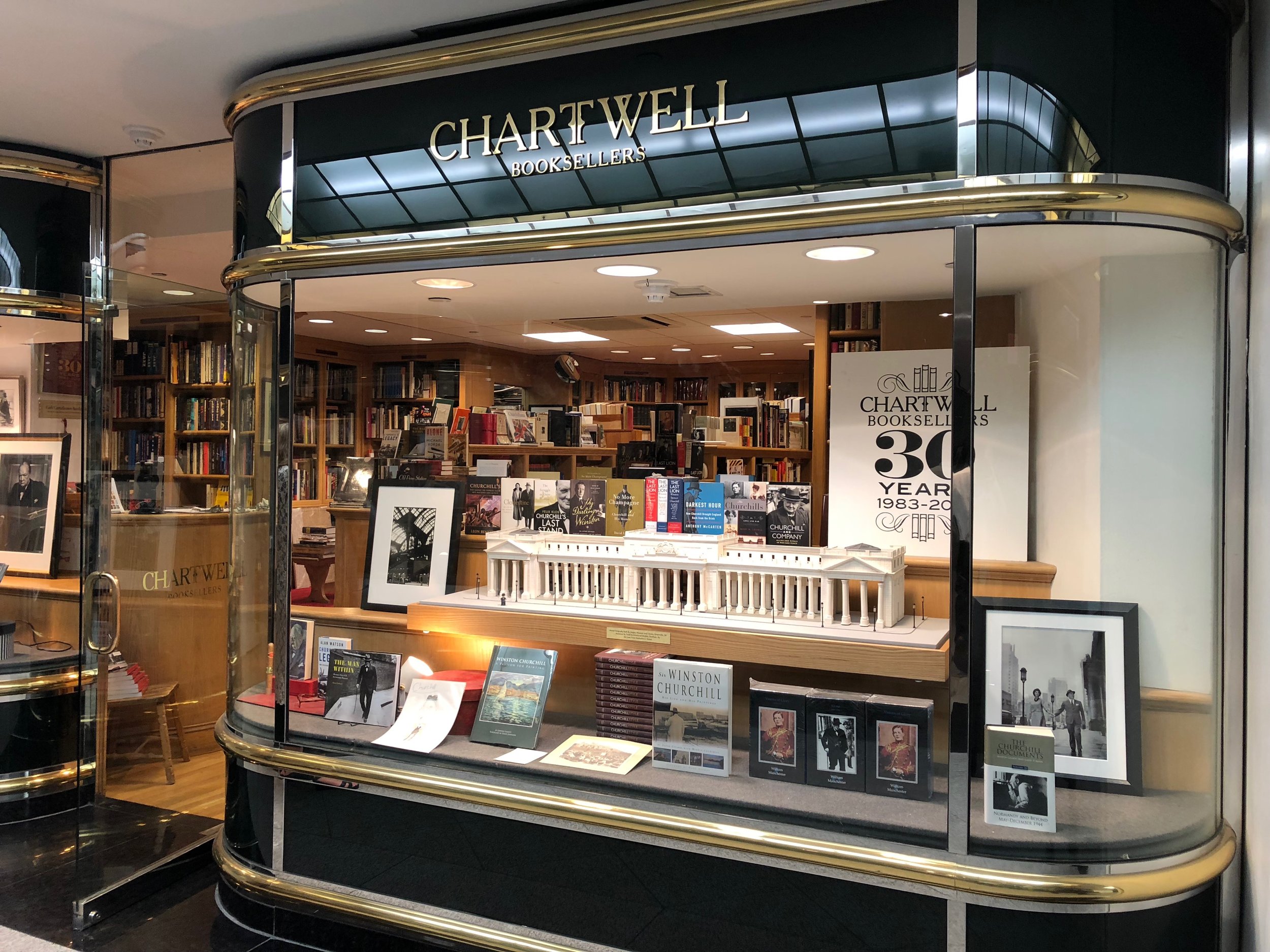
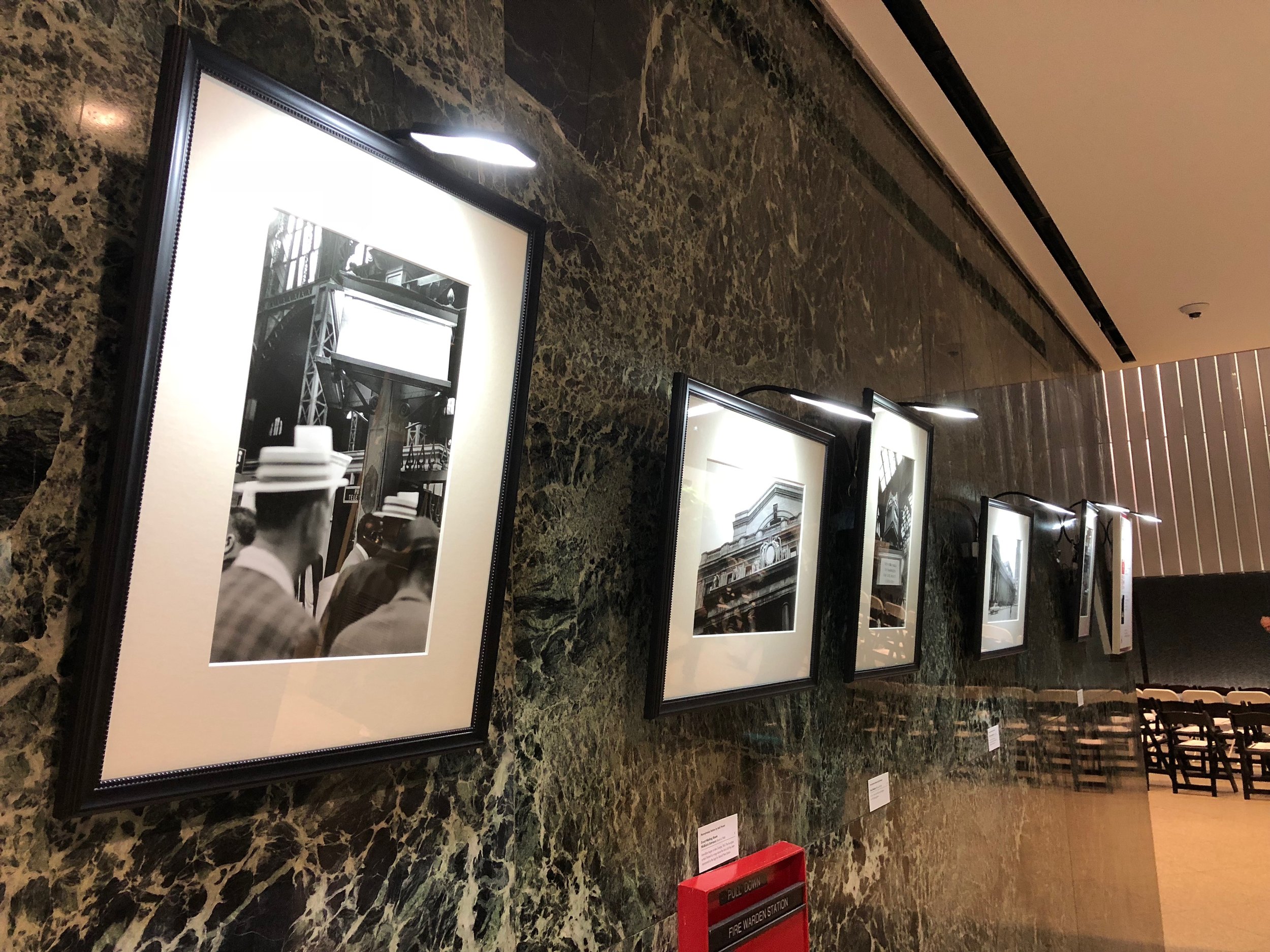
NCAS Research Fellow Catesby Leigh Surveys the Battle Over the National World War I Memorial
Catesby Leigh, the National Civic Art Society's Research Fellow, published an important article in The Weekly Standard in which he surveys and weighs in on the the battle to approve the magnificent classical design for the National World War I Memorial. (For details on the National Civic Art Society's role in the design of the memorial, click here.)
You can find Leigh's article HERE.
NCAS Research Fellow Publishes Articles on the Vietnam Veterans Memorial and Brutalism
National Civic Art Society Research Fellow Catesby Leigh has published two highly illuminating articles: the first, in the Claremont Review of Books, on the success of the Vietnam Veterans Memorial; the second, in City Journal, on nostaliga for Brutalism in the United Kingdom.
In the first article he writes:
in the annals of western art, “genius” has most often been ascribed to works exhibiting a high order of formal complexity as well as formal invention: the sculptures of Ictinus and Michelangelo, the paintings of Raphael and Caravaggio, the cathedrals and churches of the medieval master builders and Sir Christopher Wren. By this measure, we might by all means admire the Washington Monument—a simple, unornamented obelisk—but we wouldn’t expect to hear it described as “a work of genius.” ...
Lin’s wall could only be considered “a work of genius” within an eminently questionable modernist frame of reference. But it is an inspired work in its way, and one of the most important of all modernist creations if only because of the millions of people who have been moved by it.
You can find the whole article HERE.
In his article in City Journal, Leigh explains:
Brutalism’s common denominator was that it wasn’t about aesthetics but authenticity. What is authenticity? Whatever the au courant modernist happens to think is the real deal. “Authenticity” is, in fact, the most important word in the modernist lexicon. Unfortunately for millions of postwar Britons, it is a fairly reliable antonym for “beauty” or “domesticity.” Its modern roots lie in the separation of authentic or genuine artworks from fakes. So far as architecture is concerned, however, the term is totally subjective. Brutalism’s pathologically materialistic criteria for authenticity include the use of industrial materials and emphatic exposure not only of a building’s structural system but also of functional innards such as stairwells, elevator cores, ductwork, and so on.
You can find that article HERE.
Birmingham Central Public Library
NCAS Appoints Catesby Leigh as Its 2018-2019 Research Fellow
The National Civic Art Society is proud to announce the appointment of Catesby Leigh, a critic who has written extensively about public art and architecture, as its 2018-2019 Research Fellow. Leigh is a co-founder of the NCAS and retired from the board in 2008 after serving as chair for six years. His research will focus on the monumental tradition in American civic art.
Leigh was born and raised in Washington, D.C. After graduating from Princeton, he spent most of the 1980s in South America as a foreign correspondent for the Cox Newspapers chain. Visiting many cities and towns in the region, he grew increasingly interested in traditional architectural environments, and was struck by their Modernist counterparts’ failure to achieve comparable levels of visual or physical amenity. After moving back to the United States, Leigh met the distinguished architectural historian Henry Hope Reed, who became a mentor.
Leigh's first architectural articles appeared in 1991. Since then his commentary has appeared in publications including the Wall Street Journal, Weekly Standard, National Review, First Things, City Journal, and the Claremont Review of Books.
Below please find a selection of his articles:
"A Genius in Draft Form," National Review
"Penn Station, Reborn?," City Journal
"Captured in Bronze," Claremont Review of Books
RealClearPolitics profile of the National Civic Art Society
Rendering of the National Eisenhower Memorial.
On July 19, 2015, RealClearPolitics published the following article about the National Civic Art Society.
People Who Hate the Eisenhower Memorial
By Matthew Disler
Tourists milled around the Martin Luther King, Jr. Memorial last Friday, snapping photos in front of the 30-foot tall granite statue of the civil rights leader standing, arms folded, facing the Tidal Basin and the Washington Monument. Rapturous visitors wandered along the wall encircling the figure of King emerging from a mountainous slab of rock, engraved with a passage from his “I Have a Dream” speech: “Out of the mountain of despair, a stone of hope.”
Justin Shubow was having none of it.
“I think it’s an embarrassment for numerous reasons,” he stated bluntly, ticking off a litany of criticisms of the monument’s design: it was sculpted by a Chinese artist who didn’t speak English or know much about King; it ignores his religious background; it makes him look too angry. Shubow termed the quotations “second-rate” (“It’s as if you go to the Lincoln Memorial and don’t get the Gettysburg Address”) and noted that King is not wearing his wedding band.
This fierce critic is the president of the National Civic Art Society, an organization with some 100 members that has been at the forefront of the opposition to Dwight D. Eisenhower Memorial. The non-profit’s mission states that it is focused on educating the public about the classical tradition in Washington’s memorials and buildings and helping policymakers and planners continue this practice. Shubow and his organization decry the recent series of modernist memorials, which they think is highlighted garishly in famed architect Frank Gehry’s design for the Eisenhower Memorial.
It’s not the only one Justin Shubow disdains. The World War II Memorial? Shubow finds it “reminiscent of the architecture of fascist Italy,” with “Germanic wreaths,” “creepy eagles,” and a pointless fountain.
“It could easily be a Wehrmacht memorial,” he said.
Franklin Roosevelt’s Memorial? “I think it’s defeatist,” Shubow said, later adding, “The focal point [of the central statue] is his little dog. Everyone squats down and takes cutesy photos with it. It’s a piece of kitsch.”
The proposed Eisenhower Memorial, however, currently bears the brunt of his ire. Shubow and his group have become go-to sources for criticisms about the memorial in papers like The Washington Post, New York Times, and The Daily Beast, largely through their sheer doggedness. In 2011, the organization ran a shoestring-budget competition for an alternate to the Gehry design, “to suggest what a classical or traditional alternative might look like,” in Shubow’s words. He started submitting Freedom of Information Act requests about the Eisenhower Memorial Commission’s design competition, run by the General Services Administration, and in 2012 he penned a 154-page report disparaging the Gehry plan, from the design competition process (which critics like the group Right by Ikedenounce as closed and unfair) to the ballooning costs for the project. In 2013, he testified against it in a House Committee on Natural Resources subcommittee hearing.
“I think we have been focused and unrelenting, and I think we’ve had an excellent champion with Justin Shubow, who really has been a very capable leader in this endeavor and has been tenacious in his fight,” said Milton Grenfell, a director of NCAS and a Washington, D.C.-based architect. “We’ve sort of moved into de factoleaders.”
The NCAS derides the Gehry memorial as ungainly and ill-befitting the man who led the Allied Forces to victory in Europe in World War II and became the 34thpresident. The design’s most recent iteration features a 447-foot long, eight-story metal tapestry depicting a landscape in Eisenhower’s hometown of Abilene, Kan., as well as two free-standing columns and a “core” of statues depicting Eisenhower as general, president, and a young man gazing out at his future achievements.
The memorial has changed substantially since it was introduced and given preliminary approval by the Commission of Fine Arts in 2011 (it needs approval from both the CFA and the National Capital Planning Commission before construction starts). Initially, metal tapestries surrounded the memorial’s inner core on three sides; the statues of Eisenhower as general and president were bas-reliefs; and the statue of Eisenhower in the center of the memorial depicted him as a “barefoot boy,” in reference to a speech he gave soon after World War II.
Soon after the design was unveiled, Eisenhower family members began voicing their disapproval. That December, a Washington Post story quoted Susan and Anne Eisenhower, two of Ike’s granddaughters, speaking against Gehry’s proposal. After the piece ran, David Eisenhower—the only member of the family who sat on the Eisenhower Memorial Commission—resigned, explaining that he was concerned about a potential conflict of interest between his position and his new role as chairman of the Eisenhower Foundation (which runs the president’s library and museum).
In June of this year, the House Committee on Appropriations stripped all funding for the commission for the next fiscal year in its Interior-EPA appropriations bill and called for a “reset” on the memorial process, while the Senate committee allotted $1 million. In contrast, the NCPC had said that more than $70 million would be needed this year for construction to start.
“We’re hoping that in the budget compromise, the Senate will side with the House and call for a total reset of the design with an open, democratic competition,” said Shubow. “And that’s going to include a classical design, one that comports with the best of our memorial tradition.”
On July 9, the NCPC approved the final design for the memorial, with only one member dissenting. Former Sen. Bob Dole was one of the leading voices in support of the memorial, calling on the commissioners in a written statement to approve the design quickly in the name of World War II veterans—“a million aging American heroes who revere Ike and want to honor him before we are all gone.”
In his remarks at that meeting, Shubow attacked the nighttime lighting plan, arguing that the steel tapestry “will look like a glowing billboard or movie screen. It’s distracting brightness will undeniably ruin the vista to the Capitol.”
Broadly, the NCAS’s principal grievance is aesthetic, although both Grenfell and Shubow admitted that their complaints go deeper. To them, Gehry’s memorial is too modernist, and in its attempts to be something new and never-before-seen it misses the point about what a monument is supposed to do.
A good monument, Grenfell explained, should be easy to understand and beautiful.
“In terms of beauty—frankly, most modern artists don’t even think of the word,” he continued. “They think of the word ‘challenging’ and ‘cutting edge’ or something, but not ‘beauty.’ I think we need to reconnect with the great tradition of monument and architecture to go forward—not to reject it wholeheartedly, but to continue with it and evolve with it the way civilizations have always addressed monuments and art.”
Shubow concurs. “For what the public knows, it’s mainly aesthetic,” he says. “But for people who understand more, it’s about the spending, and also there’s the competition.”
So how about the Jefferson Memorial, he is asked. Does that pass muster? Shubow doesn’t hesitate: “I think it’s magnificent





